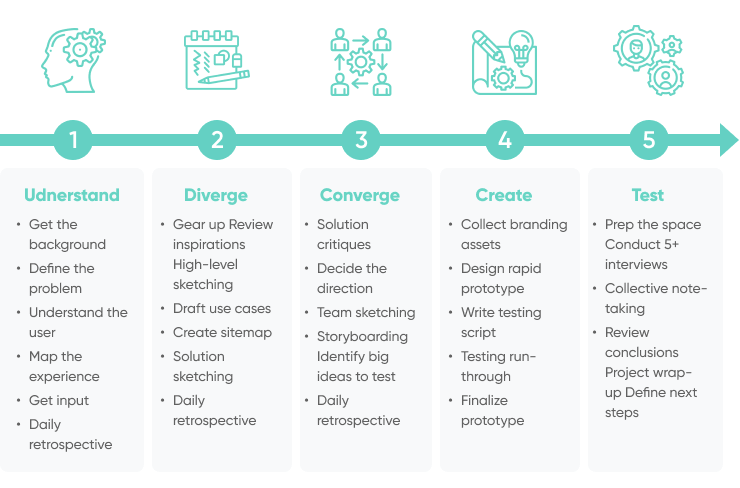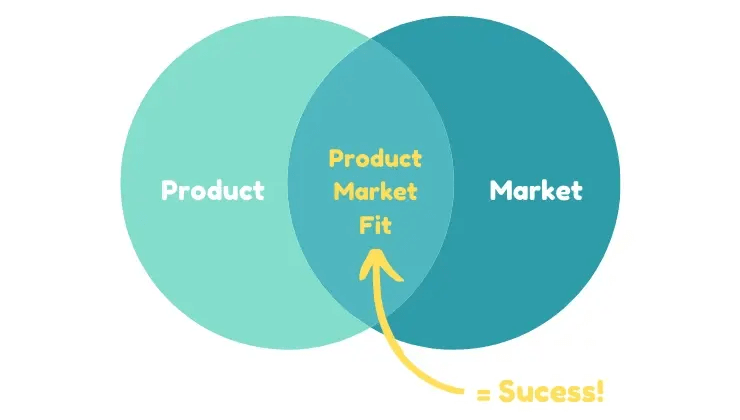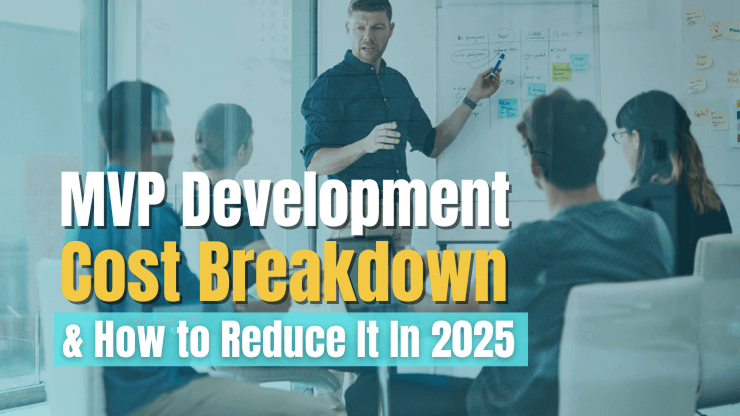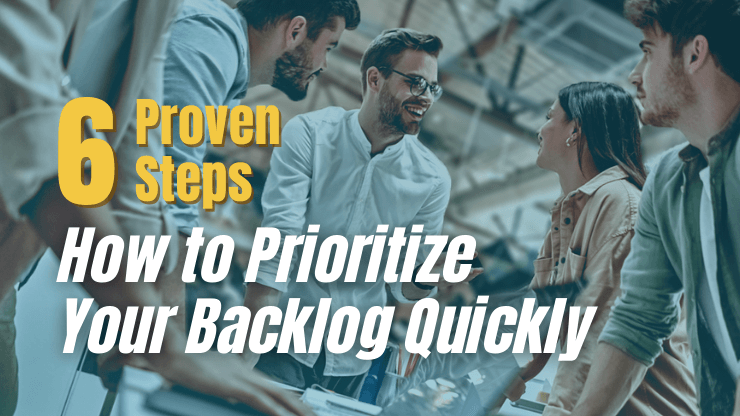If you have a great idea for a product, service, or business, the worst thing you can do is to dive in headfirst without taking the time to validate it.
Idea validation is all about testing and researching your idea to make sure that it has potential. This can help you save a lot of time, money, and effort in the long run.
In this article, you will learn how to validate your idea by analyzing its market value, building a prototype, and testing it with potential users. This will provide you a high chance of success since you are solving problems for which users are ready to pay.
- What is product validation?
- Why validate your product ideas?
- Proven ways to validate your product
- 1. Validate product mission statement and objectives
- 2. Build and test a prototype in 5 days using Design Sprint
- 3. Research Search Volume of Related Terms
- 4. Validate product value proposition high buy intent phrases
- 5. Conduct Customer Validation Interviews
- 6. Build a “smoke-test” landing page
- 7. Validate your product using social media
- 8. Target market groups on Linkedin / Facebook Polls
- 9. Ask other entrepreneurs
- 10. Build an MVP using off-the-shelf tools
- 11. Find 10 people who would be willing to pay a specific amount for the product
- 12. Use Product Hunt to validate product idea
- Conclusion
What is product validation?
Before starting working on the development of a new product, product idea validation is necessary. The product validation process is testing of your idea with real people to get feedback on its viability.
Nothing is more demoralizing than putting your efforts and time into developing a product that is not capable to grasp the customer’s attention and has no demand in the market. To avoid this wastage of time, effort, and money, there is a technique called the product validation process that helps you validate your iidea before going into the later stages of development.
If product validation is not considered in the development process, then there will be a high risk of developing a product that will fail in the market since it has no demand.
The product validation process can vary from person to person and from organization to organization. But a general product validation process must include the following parameters:
- Understanding market trends: to know about current trends of the market and what attracts the customers
- Identifying user needs and requirements: to perform user market research to know about user needs and requirements and whether your product is going to solve the user problem
- Testing product with real users: to test the product with real users, collect feedback and interaction data and make decisions to improve your product based on results.
Why validate your product ideas?
Before starting working on a new product, its validation is an important step. You need to know whether people will buy your product, and whether your business is profitable or not. The process of product validation may not ensure you 100% success, however, it increases the chances of making and successfully launching a product.
The first reason for testing your idea early in the process is that it helps you save a lot of money and time that is required to develop a product. Making changes in the vision of your product later in the development process is much harder, costly, and annoying.
Validating your idea early in the process will help you define the scope of your product before its development has been started and you can make better decisions for the product lifecycle.
Another reason is to avoid the failure of bringing a product into the market which has no demand and hence no one is ready to buy it.
The product validation process can help you better understand the potential customers as well as market demand. This learning experience will allow you to improve your idea before spending your resources on developing it.
Proven ways to validate your product
There is not only a single method that fits in all approaches to validate an idea. There are, however, a variety of excellent ways that can be used in various situations. Below is a list of proven methods for validating your product idea.
Validate product mission statement and objectives
Writing down your company’s vision and mission statement is the first step in market validation. Defining your vision can identify any underlying assumptions while at the same time it helps to define a clear end goal.
A product mission statement is a clear, short project description that explains the product's main goal. It makes clear who the product is for and what it offers to the target audience.

Validating your product mission statement is an important step in the product validation process. This validation allows you to remove bias by testing your hypotheses, and not verifying your assumptions.
To define a clear product vision, you must ask some questions to yourself:
- What is the hypothesis behind the concept of my product, pricing, and business model?
- What is the value that my product will provide to customers?
- What is the target market and what are their pain points?
- What distinguishes my product from the competitors already existing in the market?
Answering these questions can help you to express your product’s value and distinguishing factors about your product as well as reveal assumptions and hypotheses that have yet to be validated and verified.
Validation of your product objectives is about testing and understanding what problem your product is going to solve. If you see any gaps in your answers, try to fill those first.
Remember, it is not necessary that you are always right, in reality, most of the time you might not be. The sooner you try to review your product vision, the better. Changing the product objectives later in the process can cause a lot of rework.
Build and test a prototype in 5 days using Design Sprint

A sprint is a certain period of time during which the scrum team works to complete a specific amount of work. Sprint is usually a 5 days process in which designing, creating, and testing ideas with target users takes place so that any problems being faced in product development are solved. A small sprint duration helps you achieve a smaller goal and get feedback before making any costly commitments.
A design sprint is a five-stage interactive strategy and design session timeframe aimed at defining a minimal viable product (MVP) or service as quickly as possible.
Feedly shared an example of using a design sprint effectively to redesign and improve their home page. They used a design sprint comprised of a 4-week duration. The goal of this process was not only to validate the idea but also to design a new home page within a one-month of time.
Different roles participated in the design sprint including product owner, logistical advisor, customer advisor, design advisor, marketing advisor, and prototyper.
The sprint team assigned different tasks for each weak.
For week 0, they scheduled market research, preparation, and expert interviews.
Week 1 was purely Design week where they defined ideas and solutions, created images, and converted them into a prototype. User testing was also part of this week.
In week 2, they scheduled an iteration of the design work. Based on the user testing done in week 1, they made improvements in the design and revised the prototype.
Week 3 was the last week where they prepared developer-ready files, made some fixes, and prepared the final report with detail of the entire process, and strategic recommendations for the future.
From this example, it is clear that Design Sprints are an effective methodology to solve design and business challenges in a uniquely collaborative way.
Research Search Volume of Related Terms
Carrying out consistent market research on the search volume of specific keywords related to your product can determine the market validity of your idea. When people are looking for some product they would frequently use a search engine to explore what is available in the market.
People will search for their product by using some keywords which describe that product or its features. Therefore you can figure out by the volume of those keywords whether the product is in demand or not. If the search volume is greater it means the product has a high demand and vice versa.
You may look into monthly search volumes using a variety of resources, for example, Moz. If we take an example of a foam manufacturing company (Casper) the keyword used in the search may be foam or mattress. This phrase receives over 11,500 monthly searches according to Moz. Therefore it is beneficial to use Moz if you have to figure out whether the product you are going to develop is in demand in the market or not. If the product has little or no demand then there will be little or no keywords used in search engines for that product.
Instead of developing a complete product and in the end knowing that it has no demand in the market you must take a step back and use the digital marketing tools to validate your business idea first.
Validate product value proposition high buy intent phrases
Special types of phrases or keywords indicate a strong desire on the part of the searcher to complete a transaction whether it’s to buy something, to inquire about a service, or take another action that could lead to a later scale.

One of the most important parts of sponsored search is keyword intent. You can use keyword intent for intent-driven marketing not only to improve traffic to your website but also to attract an audience that can result in more sales.
To use these high-intent key phrases to validate your idea, you can follow the steps below:
- Set up a simple sign-up landing page with a short and clear description of your product. Follow Google trends to use keywords in your description.
- Add Google analytics tracking.
- Use Google AdWords or Facebook Ads to drive traffic to your site.
- Check the conversions (aim for more than 5%). Test value proposition using different AdWords headers - look for a high Click Rate (CR).
- Analyze the user interaction and collect data.
This data will help you identify what your audience wants to see and achieve using your product.
Drew Houston is the CEO of Dropbox, a Silicon Valley company that makes an extremely easy-to-use file-sharing tool. He shared a few lessons learned that helped the team to make Dropbox a very successful and usable product.
- Build a minimum viable product (MVP), not necessarily based on code, and share it with users as early as possible. Dropbox’s MVP was a 3-min screencast that helped them to get immediate and high-quality feedback.
- The biggest risk is making something that no one wants.
- Know your market and see how your product will fit into it.
- Find out your target audience and connect with them.
Conduct Customer Validation Interviews
Interviewing your target market is a good approach to learning about opportunities for your product. An effective interview can facilitate a deep exploration of a customer’s wants, needs, goals, and challenges.
You can figure out the interests and needs of potential customers as well as the products they are currently using. You can arrange an interview with customers and ask them about any assumptions and propositions you made.

Rob Infantino is the founder and CEO of Open Bay, a website that helps people find local auto repair shops. "I owe a lot of the validation process to Steve Blank," says the author, who was a proponent of working from home. He stepped out of the building after coming up with the concept for this online marketplace and met with potential customers. The concept needed to be tested by real people. He had to speak with vehicle owners and automotive repair providers because he was aiming to develop a two-sided marketplace, and both constantly provided excellent feedback about their issues, wants, and what they'd like to see. He created a working prototype and shared it with the same groups, updating them as he progressed. Months of effort went into this. He didn't realize it until it was too late.
Build a “smoke-test” landing page
A landing page can help you to properly describe your product or service and evaluate customer interest by including a specific call to action such as the “Sign up now” or “Buy now” button. As you will get more leads the greater your idea will be validated. Your landing page must be attractive and must be clear enough to show its purpose to customers.
It is easy to create a professional landing page with the help of some websites such as Lander, Instapage, and Unbounce. All these mentioned websites are dedicated to helping you in the entire process of making a landing page. The best part is that it’s simple to set up and also simple to use. You will just have to drag and drop icons and texts to create your landing page. Along with this when you will sign up for these services you will get a 30-day free trial so you can also create a landing page for free.
Observing how many people subscribe to your mailing list is the most convenient way to do a quick validation of your idea. You can also consider Google analytics to see how much traffic your landing page receives.
Validate your product using social media
Don’t underestimate the power of social media in today’s digital world. Instead of spending money on marketing campaigns, you can use your social media accounts to share and validate your ideas.
Using Facebook, Twitter, Instagram, Linkedin, and Quora you can share your product idea in the form of a sketch, image, prototype, short video, poll, or a text post. Below are a few ways to share your idea and validate it with your audience.
Platform research: First, do some research to find out the platforms where you can reach the target users and carry out our product testing.
Grow your audience: Post regularly about your idea to grow the audience. Find out the interested audience who can help you in testing your product idea.
Test with the simplest form of your product: A minimal viable product (MVP) can be designed to carry out the validation of the product through social media.
Ask for feedback: Connect with the interested audience and ask them for feedback. User feedback regarding your product is very important.
Analyse the feedback: By keeping user reviews in mind you can make changes in the idea of your product and improve it.

Target market groups on Linkedin / Facebook Polls
In addition to using social media platforms to get feedback on your idea, you can take advantage of Linkedin and Facebook polls to get input on your products as well as come to know about new business ideas.
Target the audience on Linkedin and Facebook who will be more interested in your product. For this purpose, you can join related groups and pages, or you can add targeted people to your connections list.
Create posts by adding polls to validate your business ideas. Creating a poll is an easy process and following a few steps will help you to reach out to your intended audience. Polls are a proven way to get engagements from people on social media platforms. People not only select from the given options, but they are also happy to provide insights in the form of comments to your post.
You can also provide your product samples to people who are more interested in your idea. They would love to test your samples and provide their feedback. This input can help you make better decisions in your product development journey.
Ask other entrepreneurs
Connecting with other entrepreneurs and getting their feedback is a proven way to validate your idea. The experienced entrepreneurs working on successful products have already gone through these stages. They have seen several failures before succeeding in this field. They can guide you from their own experience.
To connect with the right entrepreneurs, you can go to professional platforms including Linkedin and Quora, and find the relevant business owners. Send them a message and ask questions about your idea. Most of the people are helping and they are willing to provide their support in response.
It is a better idea to use pitch decks to connect with other business owners. Present your ideas in a professional format. This can include the following:
- A brief introduction of your company
- The problem you are going to solve
- The solution that you want to propose to solve the problem
- The market that you are targeting
- The target users and customers
- The competitors and their related products/features
Going to other entrepreneurs along with this information will help them better understand your product and hence they can provide useful feedback in return. Use this feedback to refine the product that will lead you towards a successful launch.
Build an MVP using off-the-shelf tools
A minimal viable product (MVP) is a product having just enough features to fascinate early adopter customers and validate the concept of the product in the early stage of the process. The MVP can assist the product team in receiving customer input and feedback as early as possible so that any identified problems can be solved.
The first step in designing your MVP is to ensure that this MVP will link with your business’s objectives and goals. An MVP can be a set of initial design screens or even a simple landing page with an introduction to your product and a call to action for the audience.
After building an MVP, do share it with your target audience using every possible platform including social media posts as well as sending personal emails.
Use Google Adwords to send traffic to your landing page. Install Google Analytics to track your visitors and see how they are interacting with your landing page. An analysis of the performance of your MVP will help you get user feedback on your product idea.
You can measure the effectiveness of your idea and make the required improvements in the product development process.

Find 10 people who would be willing to pay a specific amount for the product
Following are the success stories of some entrepreneurs who shared their experiences and struggle.
Rob Walling, the founder of Numa group and inventor of an email marketing tool Drip, said that he needed to identify ten customers who were willing to pay a certain amount for the completed product. This prompted him to think about the value of the idea rather than the features. A single reason was that someone would agree to pay him for the product, not the features.
He explored people of the related domains and sent emails to 17 persons who might have experienced working around the same problem. In this way, he not only had his first customers who could provide him feedback on how Drip should work but he also had to start an early cash stream that he could use to expand the product.
Another example is Edward, who is the CEO and general manager of Net Irrigate, a wireless irrigation-monitoring system maker. Edward asked his prospects a very simple question: Would you pay for a product like this one and what amount are you willing to pay?
It turned out that there were plenty of people who were ready to experiment with new technology in the agricultural sector as long as they didn't have to pay for it until it satisfied their expectations. Edward realized that understanding their perspective and the value they derive from the product rather than his own assumptions is much more important.
Use Product Hunt to validate product idea
Product Hunt is a community-based website that allows makers and marketers to launch their products or services and get in touch with their first real users.
It connects you with people in the product development field who are interested in testing new products and is free to use. These people are happy to test your product even if it is just an idea in the form of a prototype or an MVP. The feedback from these people will help new startups to validate their ideas before spending a reasonable budget in the development process.
First, you need to create an audience on Product Hunt. You can simply create a landing page to introduce your product and collect emails from visitors.
Second, you need to contribute to communities at Product Hunt and other similar forums and channels including Slack, Facebook, and IndieHackers. Build your MVP that brings some value to the audience so that they love to test your product.
Third, make sure your posts include a logo, description, product name, images, and videos so that the audience can well understand your product and provide better input.
If you are deciding to launch your product soon, Product Hunt allows you to design your launch and post-launch activities that will attract the audience and they would love to interact with your product
Conclusion
Product validation is the process of testing your idea with real people in order to receive feedback on its viability. You can reduce the chance of wasting your time, money, and effort on the development of a final product this way.
Before starting working on the development of a new product, product idea validation is necessary. Nothing is more dangerous than putting your efforts and time into developing a product that you think people will like but in the end, you find out that your product is not capable of grasping the customer’s attention and has no demand in the product market fit.

![Product Validation — 12 Ways to Test Your Product [with Examples]](/.netlify/images?url=_astro%2Fproduct-validation.Cl5P0hhg.png)





